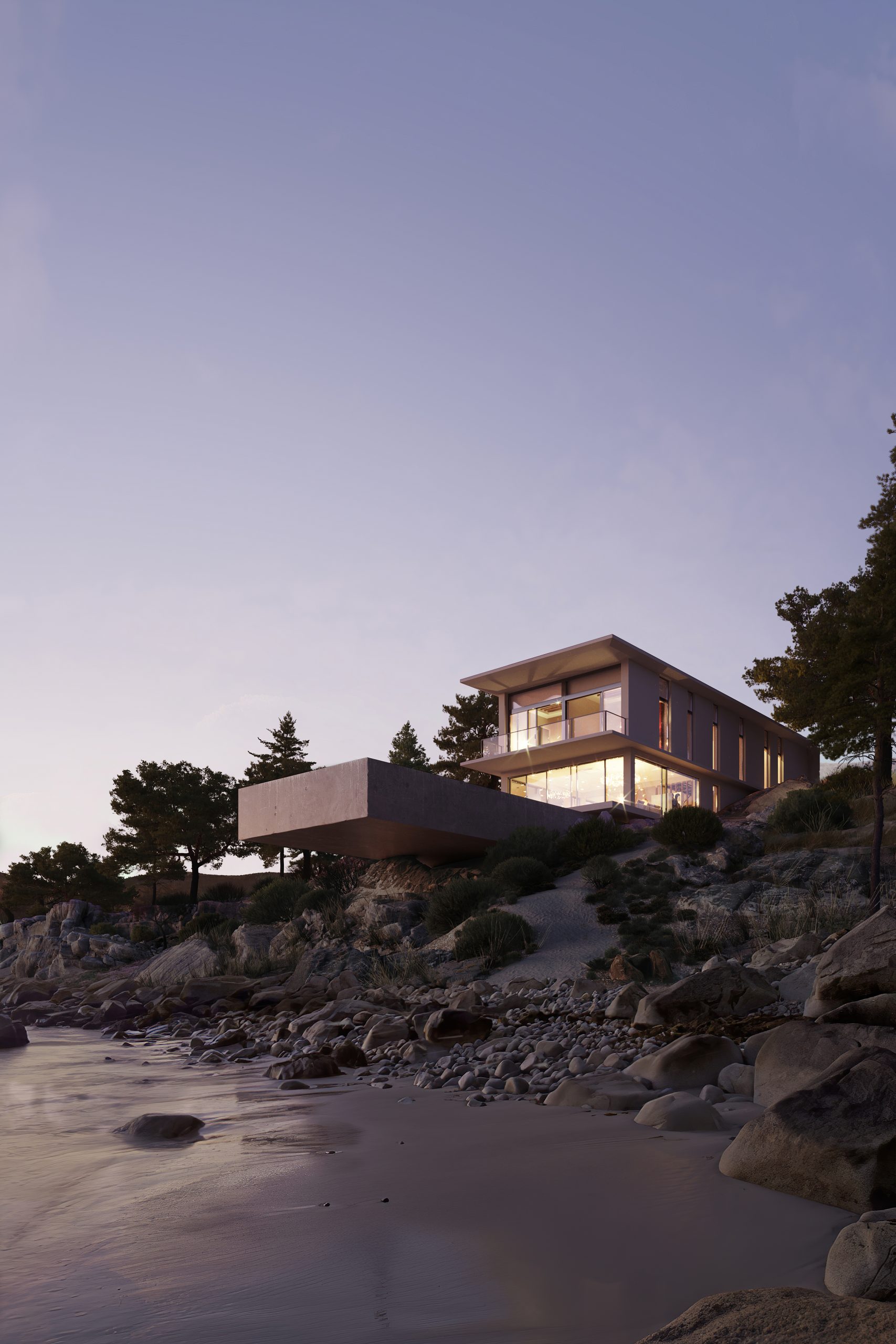Photoreal CGI is widely used within the architectural community, and for a good reason. 3D graphics allow visualizing the final results of the projects that don’t exist yet or are under construction. This helps architects create high-end marketing materials, presentations, and portfolios. However, it is possible on one condition: that exterior 3D images are of the highest quality. And to ensure that, architects should be able to tell a good 3D render from a poorly made one with ease. So, how to do so?
There are a few things to look out for when appraising 3D renders. We have compiled a short and comprehensive guide that will help architects determine architectural 3D visualization services quality. Without further ado, here is a 9-point checklist of high-end exterior 3D images!
#1. Edges of 3D models in the renders are beveled
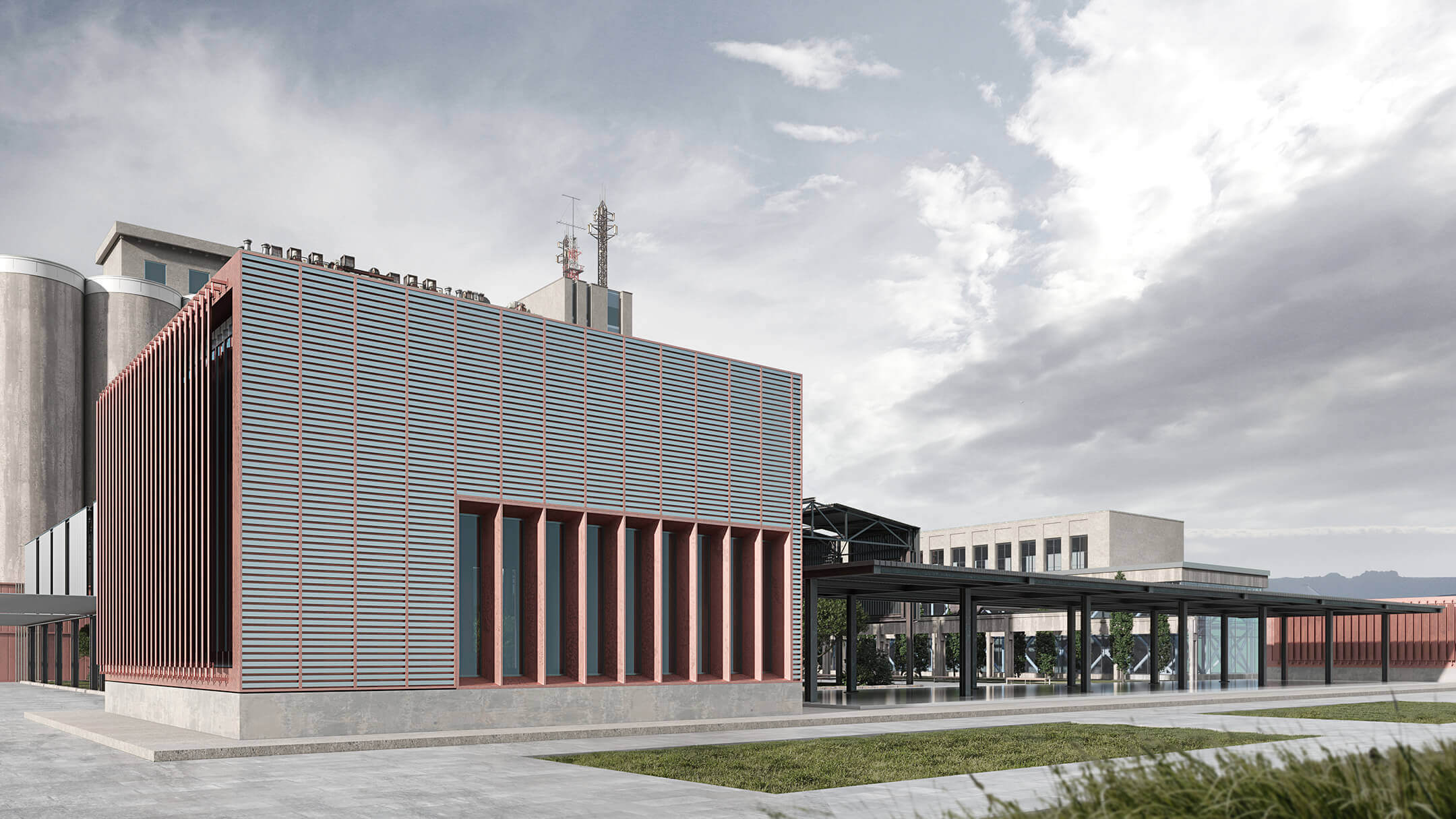
3D models are made using precise algorithms, which results in geometrically impeccable shapes. However, when the goal of 3D artists is to create a photoreal rendition of a building, it shouldn’t be too perfect. With edges too sharp, 3D models will look unrealistic. This is why masterfully made exterior 3D images feature buildings with beveled edges. Which still conveys the design idea, but presents it in a realistic way.
#2. Backgrounds are blurred to turn the attention to the centerpieces

If the backgrounds are depicted with the same level of detail as the house exterior, they may come out as too distracting for the viewers, since the audience will be torn between marveling at the building and the context it’s in. In order to avoid that, professional 3D artists who make exterior 3D images give prominence to the centerpiece and leave the backdrop slightly blurred. It can also be used as a cool visual effect which adds style points to the portfolio pictures.
#3. Lighting and shadows look real
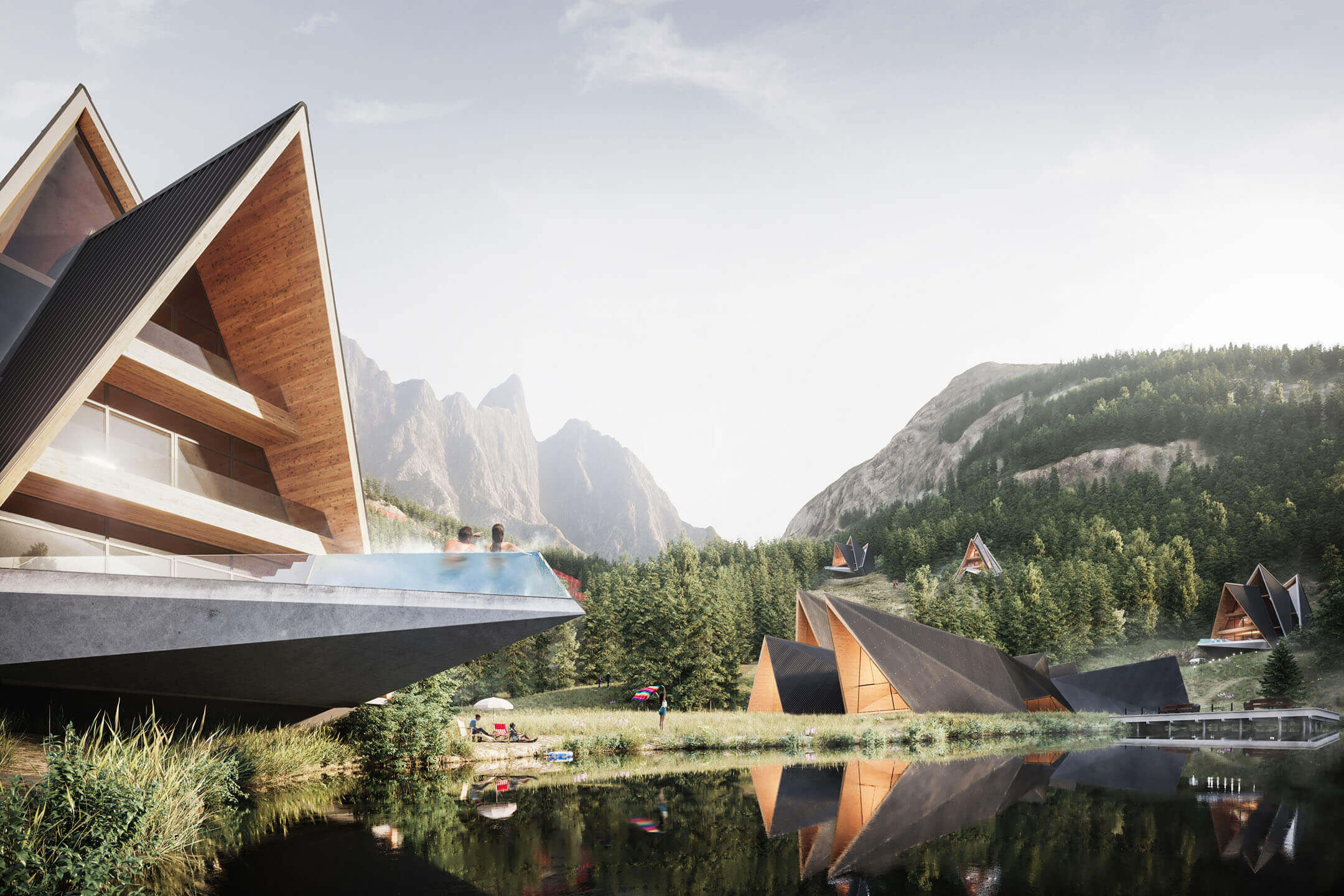
Lighting and shadows can make or break any 3D render. If there is even the slightest mistake in how the scene is lit with natural or artificial light, images will look unrealistic, and the impressiveness of the design will be ruined.
In order to create high-end architectural 3D visualizations, CGI specialists carefully place and edit light sources around the 3D building. They account for transparent objects like windows, surfaces that absorb or reflect light, and time of day. The resulting pictures have lighting indistinguishable from real-life photos. In fact, if viewers don’t know they are looking at a 3D render, they will be convinced that it is a photo of a real place!
#4. Textures are detailed and in high-resolution
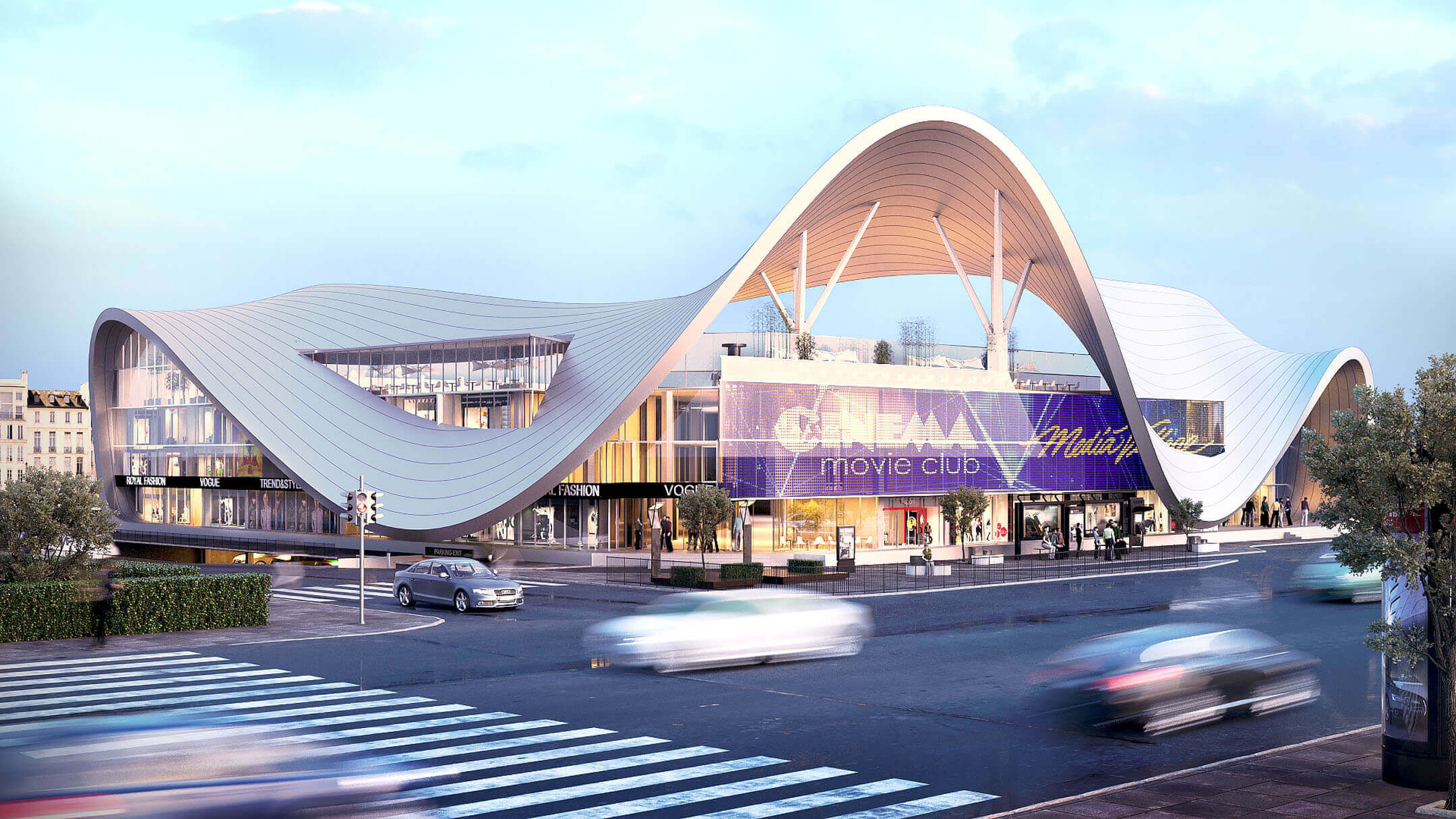
The materials used in construction are very important, since they define the looks and durability of the building, and also influence the project’s budget. So, they have to be presented impeccably in the visuals. The textures of materials in professional exterior 3D images look just perfect. Which means that they do not have pixelation, mismatched texture placement, visible seams, or other defects. Also, a professional realistic exterior rendering features high-resolution textures. This makes 3D modeled structures look and feel indistinguishable from real ones.
Ensure your exterior design project leaves a lasting impression and takes your clients’ breath away with stunning visuals.
#5. Objects look natural

The reality has its laws — materials age, cracks show, dust and leaves cover the pathways. And this must be reflected in photorealistic imagery. Showing small imperfections adds a layer of realism and believability to CGI architectural visuals. What’s more, natural effects can also help give buildings a rustic or vintage tone to complement the style.
#6. CG images follow the laws of composition

Composition plays a critical role in how visuals are perceived. When it comes to the exterior 3D images, professional 3D artists apply its rules to make sure that the picture is attractive and pleases the eye. So, how to understand if the composition in the rendering is good?
A high-end architectural 3D render always has a main central object, which instantly draws a viewer’s attention. This object is accentuated by the surrounding elements. They can be placed in accordance with the rules of symmetrical or asymmetrical composition. However, independent of which type of composition is used, one important rule must be always kept: the objects situated on opposite sides of the center must have the same visual weight. This ensures that exterior 3D images look beautiful and harmonious.
#7. CG renders are complemented by post-production effects

Post-production is just as important for the quality of exterior 3D images as all the preceding creation stages. For instance, color correction plays a huge role in setting the atmosphere of the scene. A bit colder or warmer palette can be a game-changer for the perception of the architectural design. If post-production is done professionally, applied effects look natural, creating a charming atmosphere in the CG picture. A high-end 3D render feels like one homogenous art piece, fine-tuned to perfection.
#8. CG images feature visual storytelling

Another sign of a 3D exterior rendering service’s quality is the presence of well-placed visual storytelling elements. A CGI scene created by professional artists is not just a rendition of architectural design but a story told with a single shot.
To tell stories in the exterior CG images, 3D artists add special contextual details to them. These can be cars parked outside the house, windows lit at night — anything that gives properties that “lived-in” and cozy look. If the viewers can easily imagine what it would be like to live in the presented location — an architect can be certain that this is a product of a 3D expert!
#9. Design 3D depictions are consistent
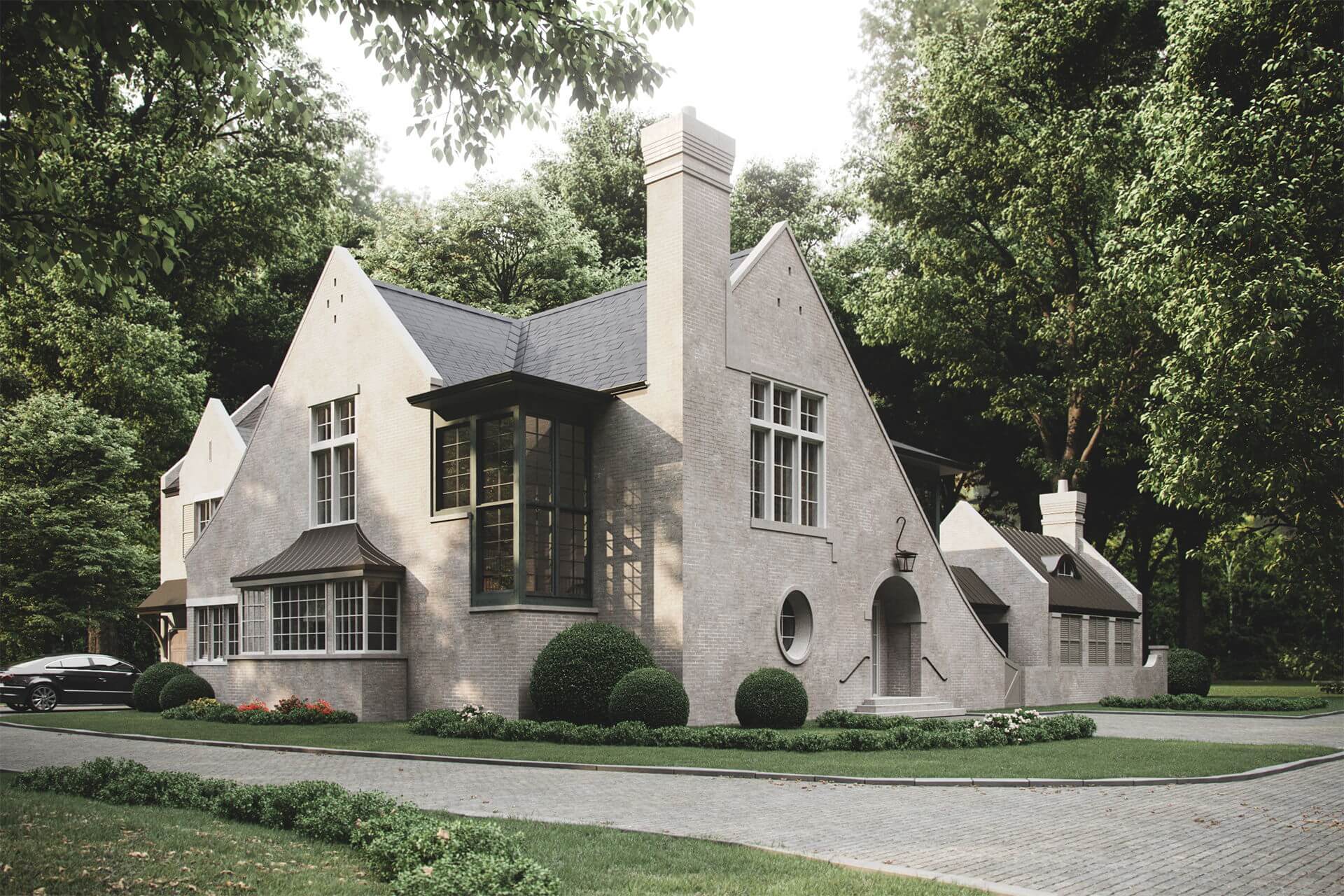
Last, but not least is the consistency of exterior 3D images. It’s incredibly easy to ruin the tone of a picture with just one mismatched element. For example, if a summer scene features a pedestrian in warm clothing, the image will look weird and unrealistic even if all the other details are okay. So, everything within a 3D visualization should look fitting, especially contextual elements. That is why the creators of high-end CGI pay close attention to detail and avoid breaking consistency.
We hope this guide was useful and will help you tell excellent exterior CG images from poorly made ones easily. So, always check that all the objects and materials in the rendering look natural. Pay attention to lighting and shading and make sure that all the textures are of the highest quality. The surroundings should not distract the viewers from the main object. Also, CGI has to feature storytelling elements and impeccable atmosphere, and stick to the laws of composition. And, of course, everything in CG imagery should look consistent.
Get your project estimated in just 1 hour - fill out this brief!
Like exterior 3D images above? Want your designs visualized in the same gorgeous fashion? Contact ArchiCGI for 3D services and get high-end architectural 3D renders of your projects!

Catherine Paul
Content Writer, Editor at ArchiCGI
Catherine is a content writer and editor. In her articles, she explains how CGI is transforming the world of architecture and design. Outside of office, she enjoys yoga, travelling, and watching horrors.


